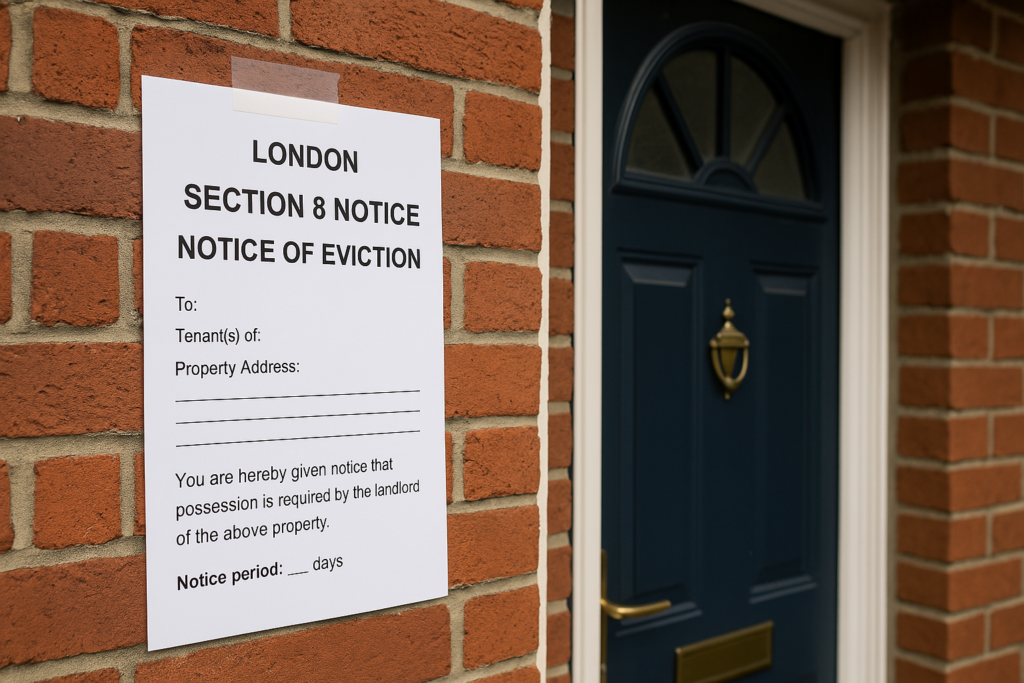Navigating the process of serving a Notice to Quit in the UK can be complex, especially for landlords seeking a swift, legal, and efficient solution to end a tenancy.
At London Estate Agency, we simplify this process by offering expert services to landlords across the UK, ensuring full legal compliance and maximum protection of your interests.
In this comprehensive guide, we explain everything about Notice to Quit for tenants in the UK,
answer common FAQs, and show how instructing our professional team can save you time, money, and legal headaches.
What is a Notice to Quit?
A Notice to Quit is a formal written statement from a landlord (or tenant) expressing the intention to end a tenancy.
It is typically used when:
The tenancy is periodic (rolling weekly/monthly)
The landlord does not want to renew a fixed-term tenancy
There is no written tenancy agreement (common in verbal arrangements)
Following the proper procedure is crucial to ensure the notice is valid. A poorly served notice can delay repossession and cost landlords thousands.
When Can a Landlord Serve a Notice to Quit?
In the UK, landlords can serve a Notice to Quit in the following circumstances:
The tenancy is periodic and has no end date.
The tenant is outside of a fixed term.
The landlord is not using a Section 8 or Section 21 notice but is ending a tenancy governed under common law or excluded licences
Necessary: You cannot serve a Notice to Quit on an Assured Shorthold Tenancy (AST) within its fixed term.
Instead, use a Section 21 (no-fault eviction) or Section 8 (eviction with grounds) notice.
Legal Requirements for Serving Notice to Quit
To be legally binding, a Notice to Quit must:
Be in writing
Clearly state the end date of the tenancy
Provide at least four weeks’ notice (or longer, depending on the rental period)
Be served correctly, either in person, via post, or as per the terms of the tenancy agreement
Failing to meet these conditions could result in the notice invalidating in court.
Notice Period for a Notice to Quit
Under the Protection from Eviction Act 1977, landlords must provide at least 4 weeks’ notice, even if the tenancy is a week-to-week agreement.
More extended notice periods may apply for monthly tenancies.
Tenancy TypeMinimum Notice Period
Weekly Tenancy 4 Weeks
Monthly Tenancy 1 Month
Quarterly Tenancy 3 Months
Yearly Tenancy 6 Months
How to Serve a Notice to Quit Properly
To serve the notice correctly:
Draft a formal letter stating the intention to terminate the tenancy
Include tenant names, property address, date of notice, and termination date
Deliver the notice:
By hand, with proof of service
Through recorded delivery
As specified in the tenancy agreement
We strongly advise landlords to keep proof of delivery, such as a signed acknowledgement or postal tracking receipt, to avoid disputes later.
What Happens After a Notice to Quit is Served?
Once the notice period ends:
The tenant is expected to vacate the property
If they don’t, the landlord must apply to court for possession
Bailiffs or High Court Enforcement Officers may be needed for eviction
It is illegal for landlords to force a tenant out without following the legal process — doing so can result in criminal prosecution and civil claims.
Frequently Asked Questions
Can I give a tenant a Notice to Quit if they are in rent arrears?
Yes, but a Section 8 notice is usually more appropriate if the tenant has significant arrears.
If the tenancy is periodic, a Notice to Quit can be used, but it won’t prioritize your case in court.
What if the tenant refuses to leave after the notice?
You must apply to the court for a possession order.
Could you not attempt to evict them yourself? Once the court grants an order, you may instruct enforcement agents to carry out the eviction.
Do I need to protect the deposit to serve a Notice to Quit?
No. Deposit protection applies specifically to ASTs. The rules may differ if you have a common law tenancy or a lodger.
What’s the difference between Notice to Quit and Section 21?
A Notice to Quit ends a non-AST tenancy or an excluded licence, while Section 21 ends an AST tenancy without reason.
Can I serve a Notice to Quit by email or WhatsApp?
Not unless your tenancy agreement explicitly allows it. Always serve notices in writing and retain hard copy evidence to be safe.
Why Instruct London Estate Agency for Notices and Evictions
London Estate Agency offers complete landlord legal services,
from serving valid Notices to Quit to handling court proceedings and tenant evictions.
Here’s why landlords across the UK trust us:
100% legally compliant documentation
Experienced professionals trained in UK tenancy law
Fast service, saving you weeks of waiting
In-house rent protection & legal eviction cover
Assistance with Section 13 rent increases and market rent reviews
EPC services and compliance inspections
Don’t risk delays or invalid notices. Let our expert team protect your investment from start to finish.
Contact Us Today
If you need help serving a Notice to Quit, navigating tenant evictions, or legally increasing rent, our specialist team is here.
We ensure peace of mind, legal protection, and rapid results for landlords across London and the UK.





